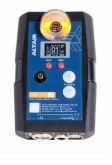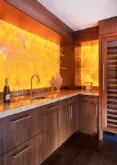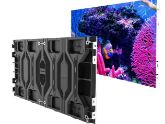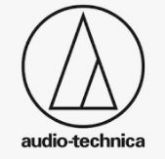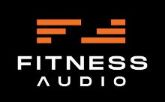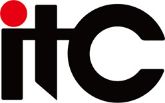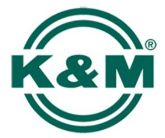Choosing Your Fenix Lifting Tower: A FAQ Guide
What is a Fenix lifting tower?
Lifting towers are heavy duty wind-up stands, with telescoping pillars, sturdy leg and levelling systems, and various attachments for hoisting and supporting speaker systems, lighting and LED screens up and keeping them there.
They are designed to be as compact and portable as possible when lowered and packed for transport, having wheels and handles to manage them withfor portability but they are still quite heavy for one person to move around due to the strength inherent in their design.
Fenix lifting towers are known for their reliability and performance in event production and professional installations. Whether you're an event technician, venue manager, or a rental company, selecting the right Fenix tower can seem daunting. These aren't just stands; they're engineered solutions for safely elevating lighting equipment, speakers, and LED screens. This FAQ will help you navigate the Fenix range to find the ideal tower for your specific needs.
What should I consider first when choosing a Fenix lifting tower?
You should start by assessing your core operational needs. This includes:
- Load Capacity: Determine the maximum weight you need to lift, including fixtures, speakers, LED panels, and any rigging. Always choose a tower with a comfortable buffer beyond this estimated load. Fenix towers range from the 200kg capacity of the AT-04 to the 1000kg of the PACQ-1000 truss tower.
- Maximum Lifting Height: How high do your items need to go? Consider venue ceiling clearances, audience sightlines, and desired visual impact. Heights vary from the AT-04 (5 meters) to the Hercules 8 (8 meters).
- Primary Application: What will you be lifting?
- Speaker Lifts (Line Array Systems): Many Fenix AT series towers are designed for front-loading line array speakers, allowing for safe ground-level setup.
- Lighting Rigs and LED Screens: Look for towers with appropriate load capacities and compatible mounting options.
- Truss Systems: For intricate truss structures, the PACQ-1000 truss tower integrates seamlessly with truss components.
How does the environment (indoor vs. outdoor) affect my choice?
The environment is a crucial factor:
- Indoor Events: Most Fenix towers are suitable for flat, stable indoor surfaces. They often feature polyamide plates on the base to protect flooring.
- Outdoor Events: Wind resistance and uneven terrain become critical. Look for models with robust, adjustable legs and a wide footprint for enhanced stability. The ELV series, with its specialized "outrigger" system and tilting pads, is excellent for challenging or uneven ground, including leaning against walls or steps.
What about portability and storage, especially for rental companies?
Portability and storage are key for frequent use:
- Folded Height and Weight: For rental companies with limited transport or warehouse space, these dimensions are crucial. Smaller models like the AT-04 (93kg, 1.59m folded height) offer excellent portability.
- Maneuverability: Most Fenix lifting towers include heavy-duty wheels and ergonomic handles for easier transport. A roller system (on AT and Hercules series) aids horizontal movement in tight spaces.
What key features and safety mechanisms should I look for?
Fenix towers are known for their safety and robust design:
- Front-Loading Design: Many Fenix models (e.g., AT and Hercules series) allow you to assemble equipment at ground level before hoisting, significantly reducing the risk of working at height.
- Durable Construction: Fenix towers use high-strength aluminum alloy (e.g., AL Si 6082 / T6) or galvanized steel (e.g., Megara and ELV series) for lightweight durability and resilience.
- Reliable Winch Systems: High-quality, oversized winches (e.g., AL-KO Compact series) with galvanized steel cables (EN 12385-4 standard) ensure smooth, secure, and controlled lifting.
- Comprehensive Safety Features: Fenix prioritizes safety with multiple redundant systems, including:
- Automatic Leg Locking System
- Safety Pins (mechanical stops)
- Internal Safety Pendulum (on front-loading towers, blocks sudden drops)
- External Triggers in Sections (lock telescopic sections)
- Built-in Spirit Level (for precise vertical positioning)
- Reinforced Base
- Polyamide Plates (protect flooring)
- Various Leg Attachment mechanisms (safety pins or base triggers)
- Compatibility with Accessories: Ensure the tower accepts Fenix's range of accessories like adjustable brackets for truss, line array adaptors, and T-bars for lighting.
Can you tell me about the different Fenix tower series?
Here's a comparison of key Fenix series:
- Fenix AT Series (e.g., AT-04, AT-05, AT-06):
- Description: Popular, versatile front-loading aluminum towers. Ideal for lifting line array systems, lighting, and LED screens.
- Key Features: Front-loading design, internal safety pendulum, external triggers, automatic leg locking, built-in spirit level.
- Use Cases: Small to medium-sized concerts, corporate events, trade shows, general stage construction, and good for rental fleets.
- Specifications:
- AT-04: Max height ~5m, Max load ~200kg, Folded height ~1.59m.
- AT-05: Max height ~5.4m, Max load ~250kg, Folded height ~1.76m.
- AT-06: Max height ~6.5m, Max load ~250kg, Folded height ~1.97m.
- Fenix Megara Series (e.g., Megara 200, Megara 300):
- Description: Telescopic towers with a traditional leg system, often made of galvanized steel for robustness. Designed for general lifting of sound systems, lighting, and truss.
- Key Features: External trigger safety, safety pins, reinforced base, polyamide plates, precise leveling bubble.
- Use Cases: Medium to large events, permanent installations, and rental fleets needing durability and higher capacities in less demanding terrain.
- Specifications:
- Megara 200: Max height ~6.4m, Max load ~200kg, Folded height ~1.92m.
- Megara 300: Max height ~6.1m, Max load ~300kg, Folded height ~1.92m.
- Fenix ELV Series (e.g., ELV-150/5, ELV-200/6, ELV-230/5, ELV-300/6):
- Description: Telescopic towers, often galvanized steel, known for their highly adaptable "outrigger" system for uneven terrain. Adjustable legs and tilting pads allow secure setup on slopes or against obstacles.
- Key Features: External trigger safety, safety pins, reinforced base, unique tilting pads, adjustable tensioners for uneven surfaces.
- Use Cases: Challenging outdoor environments, historical venues with uneven floors, tight spaces, and rental companies needing versatile towers.
- Specifications (examples):
- ELV-200/6: Max height ~6.4m, Max load ~200kg, Folded height ~1.92m.
- ELV-230/5: Max height ~5.3m, Max load ~230kg, Folded height ~1.82m.
- Fenix Hercules Series (e.g., Hercules 8, Hercules 6.5 Plus):
- Description: Heavy-duty, front-loading aluminum towers for the most demanding applications, offering high load capacities and greater heights.
- Key Features: Enhanced safety systems, reinforced design for extremely heavy loads, often double-handle winches.
- Use Cases: Large-scale concerts, festivals, installations requiring significant height and weight, and premium rental fleets.
- Fenix PACQ-1000 Truss Tower:
- Description: A specialized truss tower for lifting large sound systems or truss structures, integrating directly with Fenix SQR-40 trusses.
- Key Features: High load capacity (1000kg), steel base with detachable, levelable legs.
- Use Cases: Large festival stages, major indoor arenas, and complex production setups requiring integrated truss solutions.
How do considerations differ for event planners/production managers versus rental companies?
- For Event Planners & Production Managers: Focus on the immediate needs of your specific event. Consider venue constraints, exact weight/height requirements, ease of setup/teardown for your crew, and aesthetic integration. The AT series is often a good balance.
- For Rental Companies: Your considerations extend to versatility across multiple events, durability for constant transport, ease of maintenance, transport efficiency (how many fit in a truck?), adaptability to various sites (the ELV series is great here), and overall return on investment.
What's the final step in making an informed decision?
To make an informed and confident decision:
- Quantify Your Needs: Pin down precise maximum load, height, and typical operational environment.
- Prioritize Safety: Never compromise. Look for adherence to CE and TÜV standards.
- Evaluate Portability vs. Robustness: Balance ease of transport with necessary stability and load capacity.
- Compare Series: Use this guide to narrow down the Fenix series that best fit your needs.
- Consult an Expert: Reach out to reputable Fenix distributors or AV equipment suppliers. Share your detailed requirements; their expertise is invaluable.
- Consider Long-Term Value: For rental companies, think about the tower's lifespan, potential for damage, and ease of repair, which all impact your bottom line.

